By Linda Williams, DNR Forest Health Specialist, Woodruff;
Linda.Williams@wisconsin.gov or 920-360-0665
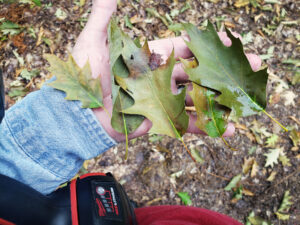
Oak leaves that drop from a tree infected with oak wilt may be all brown or all green, or often they will have green near the base of the leaf and the outer portions will be brown or watersoaked green. / Photo Credit: Linda Williams, Wisconsin DNR.
The middle of summer is the time to start watching oak trees for symptoms of oak wilt. Although symptoms show up suddenly and leaves drop quickly, symptoms can emerge anytime between now and when leaves turn color in the fall.
Trees that were wounded in the spring and became infected with the fungus that causes oak wilt will usually die that same year. In established oak wilt pockets, the fungus moves underground through grafted root systems and trees will wilt as the fungus moves into the tree.

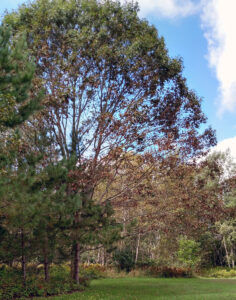
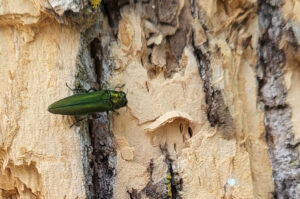
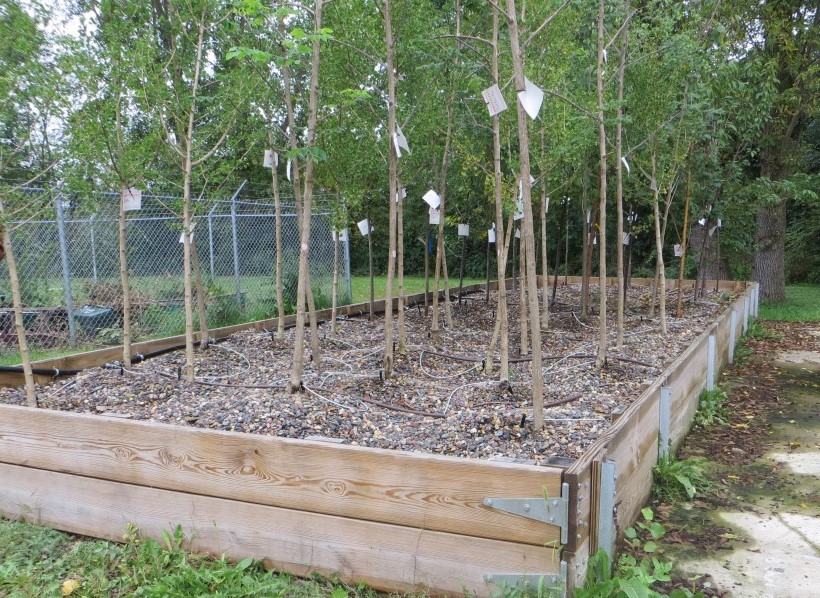 Join us for a two-part workshop on the value and uses of bare root trees and how to use gravel beds to hold and maintain bare root stock before it is planted. Part one will be delivered via Zoom on Friday, Sept. 20. Part two will be an in-person field day visit to an operating gravel bed. You will select one of the six locations around the state during registration. ISA CEUs will be available for both parts.
Join us for a two-part workshop on the value and uses of bare root trees and how to use gravel beds to hold and maintain bare root stock before it is planted. Part one will be delivered via Zoom on Friday, Sept. 20. Part two will be an in-person field day visit to an operating gravel bed. You will select one of the six locations around the state during registration. ISA CEUs will be available for both parts.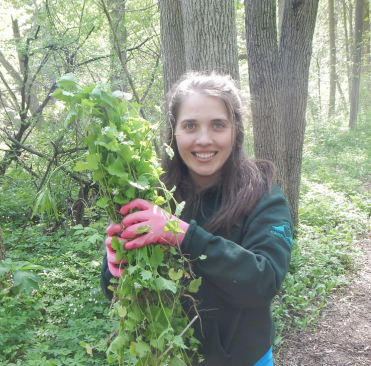 Southeastern Wisconsin Invasive Species Consortium is teaming up again with
Southeastern Wisconsin Invasive Species Consortium is teaming up again with  The Arbor Day Foundation is thrilled to announce the 2024 Partners in Community Forestry Conference and Alliance for Community Trees Day will be held in Chicago, Illinois Nov. 20-21.
The Arbor Day Foundation is thrilled to announce the 2024 Partners in Community Forestry Conference and Alliance for Community Trees Day will be held in Chicago, Illinois Nov. 20-21. The U.S. Environmental Protection Agency (EPA)’s new
The U.S. Environmental Protection Agency (EPA)’s new  As part of the USDA Forest Service Urban & Community Forestry’s Inflation Reduction Act Program, the Center for Regenerative Solutions and Urban Sustainability Directors Network opened the application for capacity building and workforce development grants for communities to accelerate urban forestry through the launch and management of Community Forestry Corps youth employment programs.
As part of the USDA Forest Service Urban & Community Forestry’s Inflation Reduction Act Program, the Center for Regenerative Solutions and Urban Sustainability Directors Network opened the application for capacity building and workforce development grants for communities to accelerate urban forestry through the launch and management of Community Forestry Corps youth employment programs.